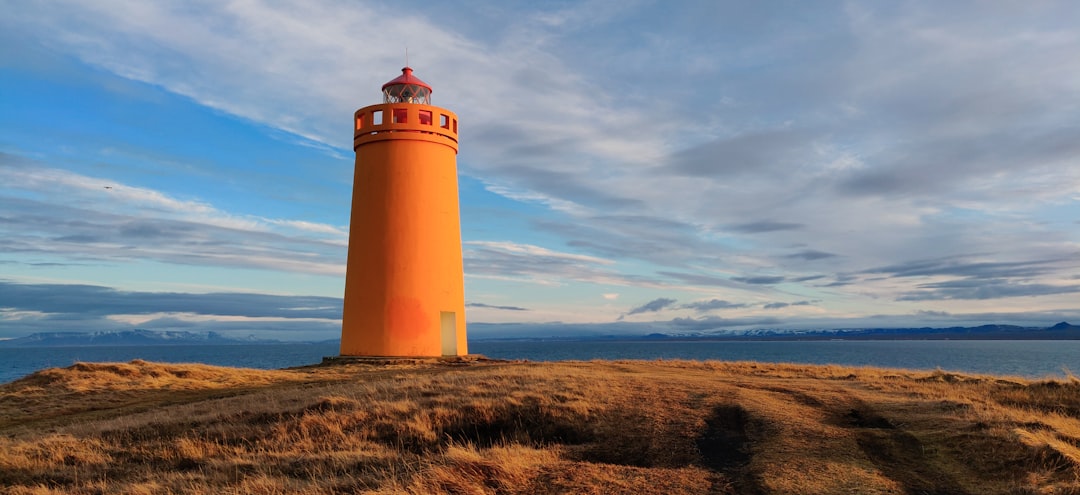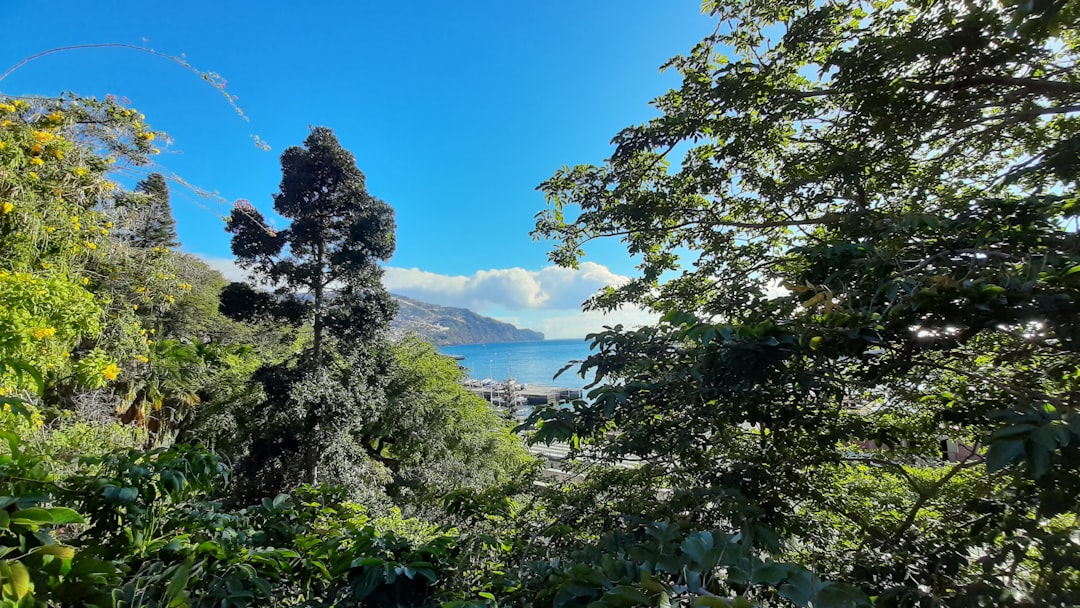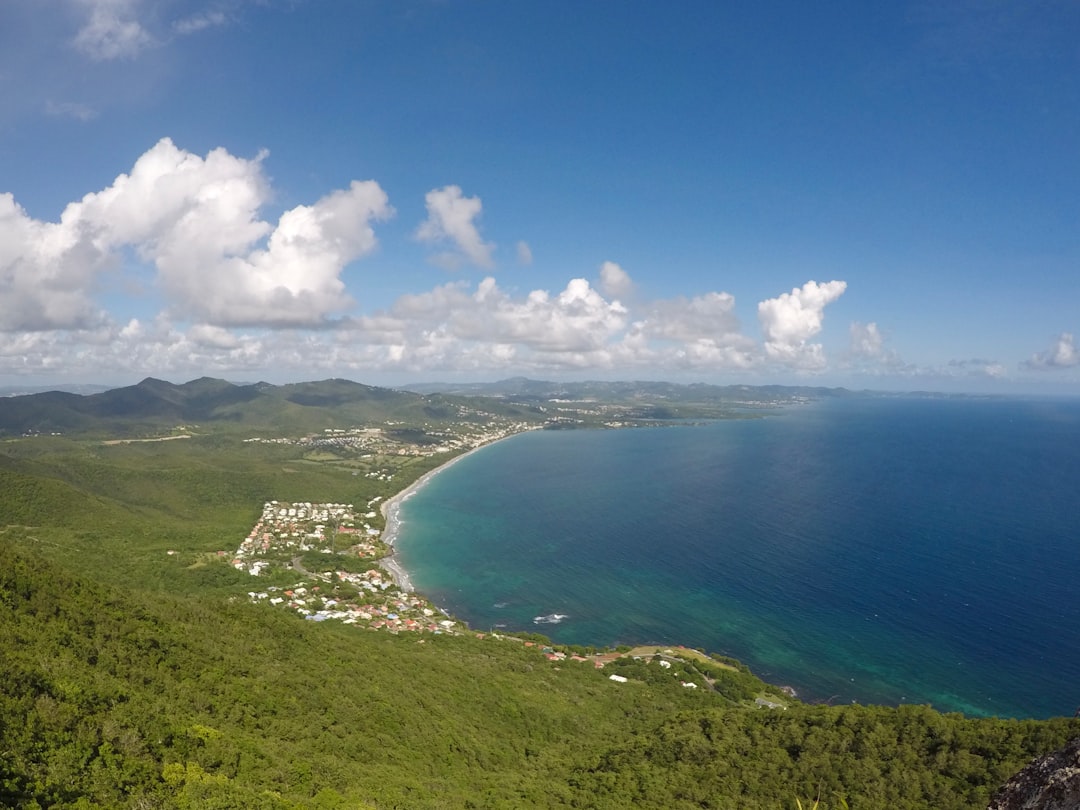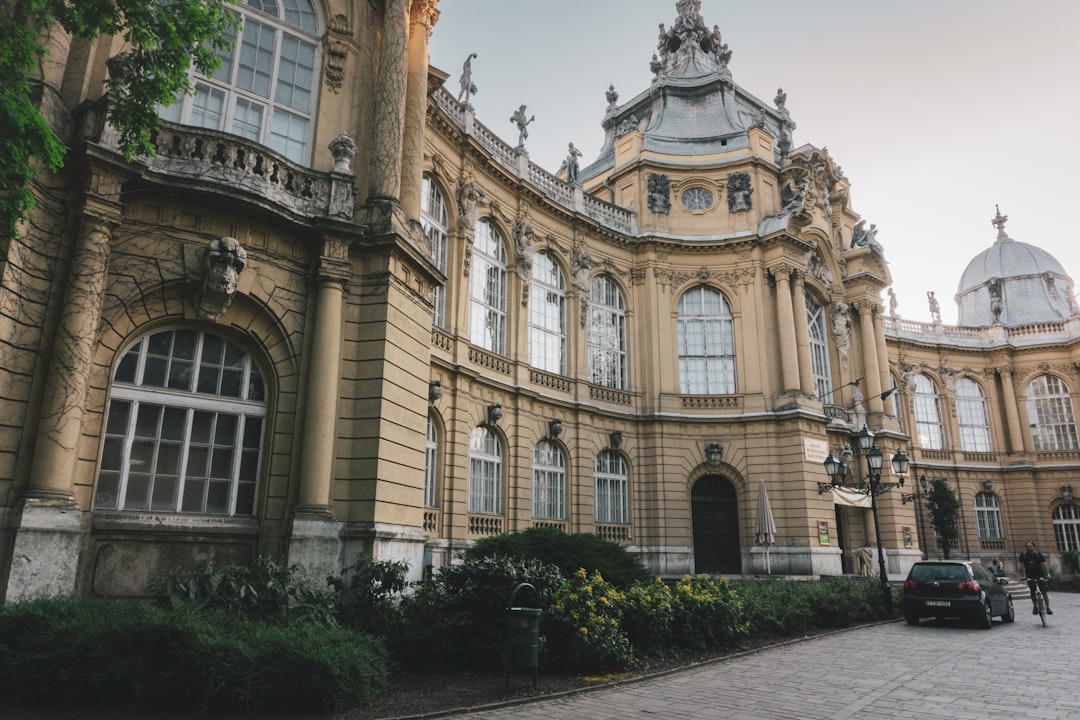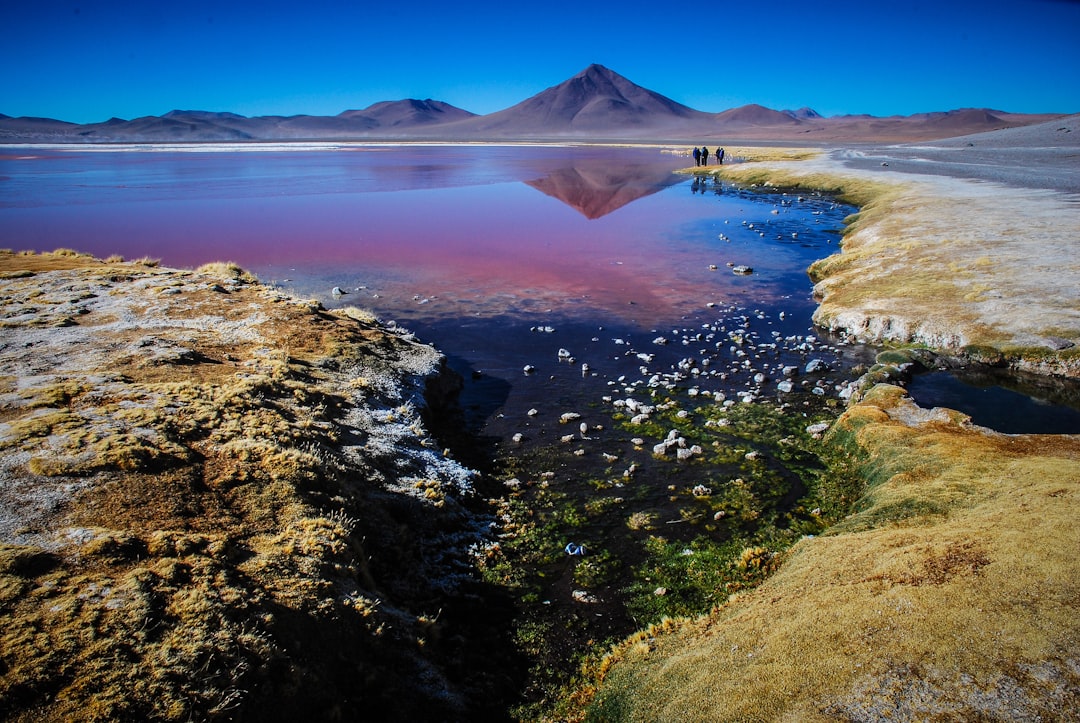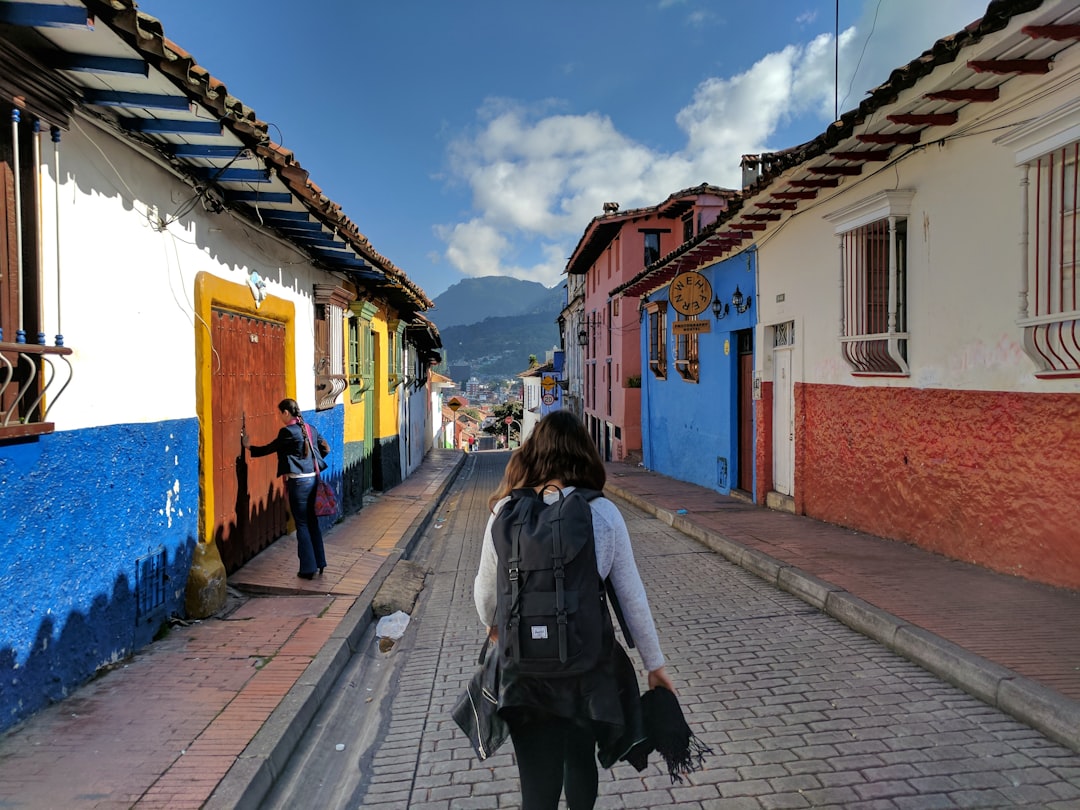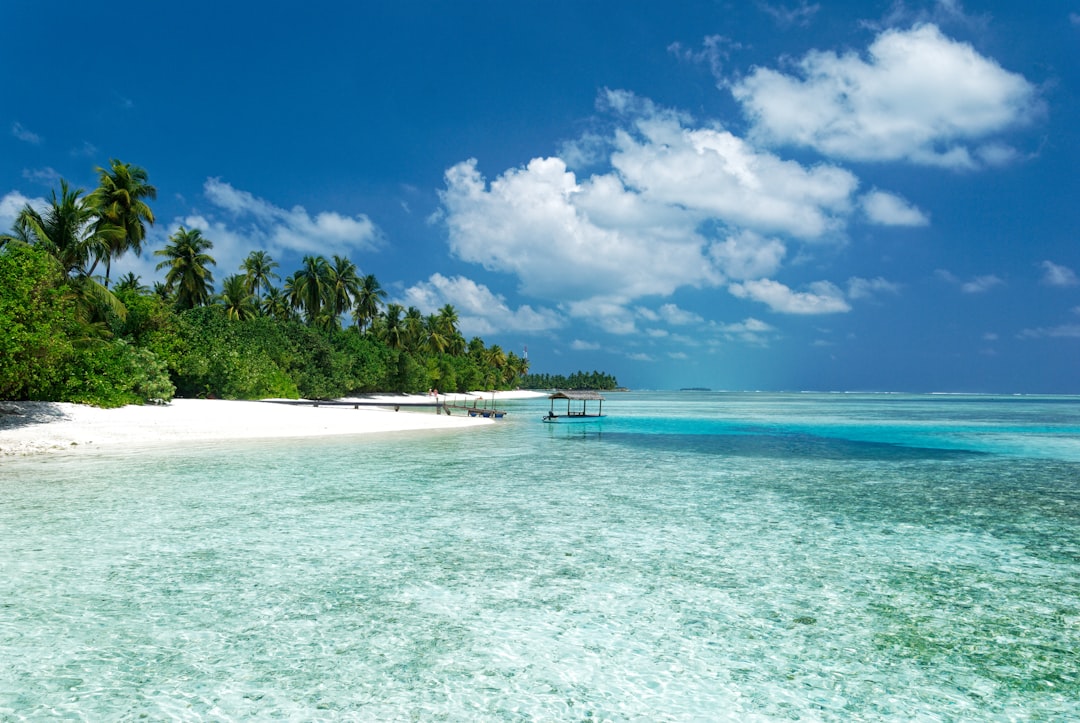Hidden Gems 7 Underrated International Destinations with Surprisingly Affordable Flights
Hidden Gems 7 Underrated International Destinations with Surprisingly Affordable Flights - Keflavík Iceland Northern Lights and Hot Springs at Budget-Friendly Prices
Keflavík, Iceland, is a destination that offers the best of both worlds: breathtaking natural wonders and budget-friendly experiences. You can witness the Northern Lights on guided tours, often in smaller groups for a more intimate experience. The Gunnuhver Hot Springs is another attraction worth visiting, offering hiking trails through picturesque landscapes and the opportunity to spot rare birds like the Icelandic Gull. And if you're looking for a more independent way to explore Iceland's diverse landscape, self-drive tours are a great option. These allow you to set your own pace and customize your itinerary while enjoying Iceland's unique geology at your own leisure. Keflavík truly is a hidden gem for budget-minded travelers seeking an unforgettable adventure.
Keflavík, Iceland, is an under-the-radar destination offering a unique blend of natural wonders and affordable adventures. Its prime location near the Arctic Circle makes it a prime spot to witness the Northern Lights, which occur when charged particles from the sun interact with Earth's atmosphere. While the optimal viewing window is between September and April, the ideal temperature range for aurora watching falls within the typical Keflavík winter climate, ranging from -5°C to -20°C.
While the Blue Lagoon is a well-known geothermal attraction, Keflavík boasts a variety of natural hot springs, often less crowded and cheaper, for a more authentic and budget-friendly experience. The Reykjanes Peninsula, where Keflavík is located, has a high concentration of geothermal activity due to its location on the Mid-Atlantic Ridge. This allows visitors to explore unique geological features like hot springs and mud pots, showcasing the planet's tectonic processes.
Keflavík is also a great jumping-off point to explore the Snaefellsnes Peninsula and other scenic areas, offering an alternative to Reykjavík. The clear, cold air of winter not only enhances aurora visibility but also minimizes light pollution, providing excellent conditions for serious aurora enthusiasts. For budget travellers, late autumn and early spring often see significantly reduced airfare and accommodation prices, perfectly aligning with both the aurora season and hot spring availability.
Keflavík's public baths, utilizing natural geothermal water, offer a cost-effective way to immerse in Icelandic culture. Entry fees are notably lower than those of private spas, making relaxation accessible for budget travellers. Interestingly, the mineral-rich water in these hot springs, particularly silica and sulfur, is believed to have therapeutic benefits, adding an additional health boost to the overall experience. The area's reliance on geothermal energy for heating and hot water makes these activities both affordable and environmentally friendly.
Hidden Gems 7 Underrated International Destinations with Surprisingly Affordable Flights - Funchal Madeira Off-Season Deals for Atlantic Island Adventures
Funchal, Madeira is a hidden gem waiting to be discovered. Off-season travel offers an opportunity to experience its unique beauty and culture without the usual crowds. Explore the famous levadas, those historic irrigation channels that now serve as picturesque hiking trails. The Levada das 25 Fontes, with its scenic views and natural attractions, is a must-visit. But beyond the well-known, there are hidden gems like the Achadas da Cruz cable car, charming villages brimming with culture, and the Madeira Botanical Garden. And if you're looking for a break from the ordinary, a ride on the Madeira Cable Car offers breathtaking views of Funchal. The best part? You'll find all this at more affordable prices during the off-season. So if you're seeking a tranquil and culturally rich getaway, Funchal, Madeira, is the perfect destination for your next adventure.
Funchal, Madeira, offers a unique perspective during the off-season. The mild climate, ranging from 15°C to 25°C, feels pleasant even during winter when mainland Europe is gripped by colder temperatures. The island's biodiversity shines, showcasing over 2,000 plant species, including many unique to Madeira. Hiking these diverse botanical landscapes is a peaceful experience, especially during quieter months. Madeira's volcanic origin creates dramatic scenery that the levadas, a network of irrigation channels, help you explore.
The food scene is as vibrant in the off-season as it is during peak season. Locally caught seafood, especially the unique espada (black scabbardfish), paired with banana, can be enjoyed at more affordable prices. Madeira wine, with its distinctive aging process, can be sampled at discounts in local wineries. The off-season allows for a more intimate shopping experience in local markets and artisanal shops. Engaging with local craftsmen is less frantic without the peak tourist crowds.
Madeira's underwater world is rich and diverse, with over 20 marine protected areas. Diving trips are less expensive during the off-season and provide the advantage of clearer waters as less sediment is churned by tourism activities. The island is known for its levada walks, a mix of natural beauty and human engineering. The lower traffic during off-peak season offers a peaceful hiking experience. Madeira's annual flower festival happens in spring, but the off-season still allows you to appreciate the botanical gardens, like the Botanical Garden, where plants bloom throughout the year.
While the public transportation system, including the efficient island-wide bus network, operates on a reduced timetable in the off-season, it still provides a glimpse into the local infrastructure. Exploring Madeira at this time allows you to experience the island's authentic charm, natural beauty, and culinary delights without the usual tourist crowds.
Hidden Gems 7 Underrated International Destinations with Surprisingly Affordable Flights - Martinique Caribbean Beauty Without the Tourist Crowds
Martinique is a Caribbean island that, unlike its more popular neighbors, remains relatively undiscovered by mass tourism. It's a beautiful island with white sand beaches, lush rainforests, and vibrant cultural experiences. Martinique offers a chance to connect with the true spirit of the Caribbean without the usual tourist crowds. Highlights include the Balata Gardens, a peaceful haven showcasing the island’s diverse flora, and the La Caravelle Nature Trail, where you can immerse yourself in the island’s lush landscapes. The island’s French influence is evident in its cuisine, markets, and architecture, while its Caribbean heritage shines through in its music, dance, and friendly locals. If you're seeking a relaxing escape or a more authentic cultural adventure, Martinique offers a unique blend of both.
Martinique, often overlooked by travelers, holds a unique charm that's worth exploring. It boasts diverse landscapes, ranging from lush rainforests to pristine beaches, influenced by both its volcanic origins and tropical climate. The island is home to Mount Pelée, a still active volcano with a history of devastating eruptions, one of which in 1902 wiped out the town of Saint-Pierre. Beyond the dramatic landscape, you'll find a vibrant culture that blends French influence with Caribbean charm, creating a unique cultural fusion.
One aspect that sets Martinique apart is its commitment to agriculture, resulting in the production of some of the finest rum in the Caribbean. The island's diverse terroir, supported by fertile volcanic soil, produces sugarcane ideal for crafting complex and flavorful spirits. Martinique also boasts an abundance of flora and fauna, from the endemic Martinique Blue Curacao liqueur derived from Laraha oranges to a thriving coral reef system teeming with marine life.
Despite the island's beauty, Martinique manages to remain relatively untouched by large crowds. The less popular areas, like the northern region near Le Prêcheur, offer a tranquil escape with fields of wildflowers and lush landscapes. Martinique's beaches are another highlight, with black sand beaches formed by volcanic activity offering a unique experience, particularly those less frequented by tourists. While Martinique might not be as well-known as some of its Caribbean neighbors, it presents a hidden gem for those seeking an authentic cultural experience, stunning natural beauty, and a chance to escape the tourist crowds.
Hidden Gems 7 Underrated International Destinations with Surprisingly Affordable Flights - Budapest Hungary Art Nouveau Architecture on a Shoestring
Budapest is a city overflowing with Art Nouveau architecture, a unique blend of styles and buildings that can be discovered without spending a fortune. One standout is the House of Hungarian Art Nouveau, where you'll see a fascinating fusion of Belgian Art Nouveau elements and traditional Hungarian designs. Then there's the State Treasury, designed by Ödön Lechner, famous for its eye-catching ceramic roof tiles. Vajdahunyad Castle, a fairytale-like structure in City Park, is a must-see, and the Museum of Applied Arts, with its Eastern architectural inspirations, is another gem. If you're looking for hidden architectural treasures, Budapest is the place to be. Exploring these lesser-known masterpieces offers a chance to delve into Hungary's artistic past without breaking the bank.
Budapest, often lauded for its grand architecture, holds a lesser-known treasure in its Art Nouveau structures. This distinct architectural style, known locally as "Secessionist," is a captivating blend of Eastern and Western influences, emerging in the late 19th century. Key figures like Ödön Lechner led the movement, favoring organic forms, floral motifs, and intricate tile work, creating a unique visual language.
A walk through Budapest reveals an abundance of Zsolnay ceramics, notable for their polychrome glazing. These colorful tiles, produced by the renowned Zsolnay factory, showcase innovative techniques that create a mesmerizing shimmering effect, especially under the sun's rays. This decorative artistry is a hallmark of the city's Art Nouveau legacy.
While Budapest is famous for its thermal baths, few know that some Art Nouveau buildings, like the Gellért Baths, were constructed alongside these natural springs. This juxtaposition showcases the deep connection between architecture and the natural world that was crucial to Budapest's cultural identity.
Fortunately, budget-conscious travelers can access this hidden architectural world through affordable guided tours. These tours, often organized by non-profit organizations, offer a unique opportunity to delve into the city's rich history, unveiling secret gems and providing insights into the unique stories behind the buildings.
Despite its beauty, much of Budapest's Art Nouveau architecture suffered in the post-war era, neglected due to economic hardships. Fortunately, recent decades have witnessed a revival of restoration efforts, with many facades now painstakingly restored and ready for exploration.
Exploring the city reveals unexpected complexity in the facade sculptures, often allegorical figures that tell stories of Hungarian history and culture. This integration of sculpture with architecture was a popular practice amongst Art Nouveau architects, enriching the urban fabric with narratives that weave through the city.
Thankfully, budget-friendly accommodations are available in proximity to many prime Art Nouveau sites, such as the Hungarian State Opera House and the Museum of Applied Arts. This accessibility makes exploring these architectural treasures incredibly easy and affordable.
The influence of Art Nouveau extends beyond buildings to even street furniture. Lamp posts and benches throughout the city share the same organic curves and artistic style, showcasing a cohesive urban design that was a defining characteristic of the era.
Budapest’s vibrant arts scene also offers a platform to celebrate its architectural heritage. Every year, the city hosts arts festivals that include exhibitions delving into the city's rich artistic movements, giving visitors a chance to interact with local artists and historians for little or no cost, further enhancing their understanding of Art Nouveau.
Finally, some of the city's most beautiful examples of Art Nouveau are hidden within private gardens and courtyards. These often overlooked green spaces, accessible through smaller streets, feature decorative elements reflecting the era. This hidden beauty offers an alternative, and affordable, way to enjoy the city's rich architectural heritage.
Hidden Gems 7 Underrated International Destinations with Surprisingly Affordable Flights - Bolivia Uyuni Salt Flats and Lake Titicaca for Less
Bolivia’s Uyuni Salt Flats and Lake Titicaca are hidden gems that offer a stunning adventure without breaking the bank. The Uyuni Salt Flats, a sprawling expanse of white, create a surreal landscape, best experienced through affordable tours that can include visits to Isla Incahuasi and the Eduardo Avaroa National Reserve for under $110 for a three-day trip. Lake Titicaca, a high-altitude lake with cultural significance, invites travelers to embark on budget-friendly catamaran cruises and explore the legendary Island of the Sun. If you're interested in history, nearby Tiwanaku, a UNESCO World Heritage site, provides an additional opportunity for affordable exploration. So, if you’re seeking an unforgettable and affordable adventure, Bolivia might be your next destination.
Bolivia's Uyuni Salt Flats and Lake Titicaca are destinations that offer a compelling blend of geological marvels, cultural heritage, and challenging landscapes. The Uyuni Salt Flats, the world's largest, were once a massive prehistoric lake that evaporated, leaving behind a massive salt crust, a stunning expanse that can reflect the sky in a mind-bending mirror effect, especially after rainfalls. The area is a hub of salt production, and local communities still use traditional methods, creating striking salt pyramids that add to the visual richness of the region. This remote location presents a starkly beautiful backdrop for both photographers and adventurous travelers.
The lake, a major attraction, boasts a rich cultural history as the birthplace of the Inca civilization. Lake Titicaca holds the distinction of being the world's highest navigable lake. It's home to many endemic species, including the Titicaca water frog, which is the largest freshwater frog and an interesting case study in adaptation to high altitudes. Despite the region’s isolation, a rich cultural tapestry emerges, with multiple indigenous groups, including the Aymara and Quechua. These groups maintain traditions, languages, and crafts that reflect their profound connection to the lake.
This is an area where the extremes of nature become visually evident, The Uyuni Salt Flats, at high altitude, face extreme temperature fluctuations. While this can be challenging, the effect of these fluctuations on the environment is beautifully apparent in the starkness of the landscape and the breathtaking views of the night sky. The lake also serves as an important biodiversity hotspot, supporting hundreds of bird species, a significant reminder of the ecological significance of this unique region.
Transportation can be challenging due to the remote location and altitude. However, the unique landscapes and cultural tapestry in this region make the journey rewarding. The distinctive hotels, constructed almost entirely from salt bricks, present a unique architectural design that reflects both local ingenuity and the abundant natural resources of the area.
Hidden Gems 7 Underrated International Destinations with Surprisingly Affordable Flights - Colombia's Coffee Region Affordable Flights to Caffeine Paradise
Colombia's Coffee Region is a hidden gem for travelers looking for a mix of natural beauty and cultural experiences. Nestled amongst charming towns like Salento and Filandia, the region offers stunning coffee plantations, vibrant local traditions, and colonial charm. Adventure seekers can explore Los Nevados National Park with its dramatic landscapes and volcanic peaks, while those who appreciate authenticity can visit coffee farms to experience Colombia's coffee culture first-hand. Direct flights from Bogotá to major cities in the region, like Pereira, Manizales, and Armenia, take only about an hour, making this a budget-friendly escape. Whether you're hiking through stunning landscapes or sipping a cup of freshly brewed coffee, Colombia's Coffee Region is a delightful and underrated destination worth exploring.
Colombia's Coffee Region, a place steeped in the tradition of coffee cultivation, offers a captivating glimpse into the heart of caffeine paradise. It's a fascinating region, not just for its delicious coffee but also for its unique landscapes and rich cultural heritage.
While we might think of coffee simply as a beverage, the journey from bean to cup is one filled with fascinating details. The region's unique "faldas," undulating lands formed by volcanic activity, create microclimates perfect for growing coffee. This volcanic influence enriches the soil, resulting in the superior taste of Colombian Arabica coffee.
Beyond the land, the Coffee Region boasts a captivating cultural heritage. UNESCO recognized the region's Coffee Cultural Landscape, highlighting the traditional coffee-growing practices that have been passed down through generations. This historical connection to the land is reflected in the region's agricultural heritage and the careful craftsmanship involved in producing high-quality coffee.
The elevation of the Coffee Region plays a significant role in the coffee's distinct flavor. Beans grown at higher altitudes develop a more complex taste due to the slower maturation process. This results in a more nuanced and flavorful coffee experience.
However, the journey from seed to cup is one that requires time and care. A coffee plant takes three to four years to reach its optimal fruit-bearing stage, making it a testament to the dedication and commitment of the farmers. To further emphasize the ecological harmony of the region, many coffee farmers practice agroforestry, a sustainable farming method that blends coffee cultivation with other crops. This technique not only boosts biodiversity but also contributes to the creation of vibrant ecosystems.
Speaking of harmony, coffee cultivation in the region often incorporates shade-grown techniques. This practice involves strategically planting trees to provide shade for the coffee plants, ensuring a favorable environment for growth while also managing pests naturally. This delicate balance between nature and human activity is a hallmark of the region's approach to coffee production.
The region's rugged terrain has inspired inventive solutions for transportation. Many farmers rely on horseback for transporting coffee beans due to the challenging roads, showcasing a fascinating approach to logistics. This innovative spirit is also reflected in the strong cooperative network among the farmers. These cooperatives allow farmers to pool resources, share knowledge, and negotiate better prices for their beans, creating a stable community and a resilient economic structure.
The experience of tasting coffee in Colombia goes beyond simply drinking it. It involves a meticulous sensory evaluation process that carefully considers aroma, acidity, body, and aftertaste. This comprehensive approach to cupping emphasizes the meticulous craftsmanship behind each cup, revealing the sophisticated complexities of Colombian coffee.
Hidden Gems 7 Underrated International Destinations with Surprisingly Affordable Flights - Koh Rong Thailand Tropical Bliss on a Backpacker's Budget
Koh Rong, the second-largest island in Cambodia, sits nestled in the Gulf of Thailand and offers an incredible escape for budget-minded travelers seeking tropical bliss. A short ferry ride from Sihanoukville puts you on this island, which has retained a rustic charm that appeals to those seeking adventure and a break from the usual tourist crowds. Its stunning beaches, vibrant jungle trails, and a variety of affordable accommodations, like those found at Palm Beach, make Koh Rong a hidden gem. The island isn’t just about relaxing on its beaches, it offers plenty of chances to get outdoors and experience a bit of adventure. You can swim, snorkel, trek through the jungle, or simply soak up the sun, all on a budget. No matter what you choose to do, a trip to Koh Rong is likely to be an unforgettable experience without breaking the bank.
Koh Rong, Cambodia's second-largest island, is a haven of pristine beaches and jungle trails. While the island is known for its beauty, its geological origins are fascinating. Koh Rong formed over 200 million years ago during the Triassic period, and its granite composition contributes to its unique features. The surrounding waters, remarkably clear due to high albedo and minimal pollution, are home to a diverse marine ecosystem with over 50 coral species.
Another captivating aspect is the presence of bioluminescent phytoplankton that create a mesmerizing glow along the shores at night. While Koh Rong is a natural beauty, its economy is reliant on the coconut industry, with over 400,000 coconut palms planted. Beyond this, the island's unique ecosystems, including its tropical rainforests and mangrove forests, offer a glimpse into the diverse wildlife of Southeast Asia.
While exploring Koh Rong, you'll likely encounter various forms of transportation like boats and tuk-tuks as the island lacks a formal road network. This has led to innovative approaches to transportation and logistics. Koh Rong's diverse Khmer population, with its distinct cultural traditions and languages, adds to the island's unique character.
Tourism has increased significantly on Koh Rong in recent years due to affordable flight options, which has brought new challenges and opportunities for local infrastructure. The island also has a geological feature just off the coast, underwater thermal vents, which contribute to the unique marine environment, highlighting the dynamic geological nature of the region.
More Posts from sarahcheapflights.com:
- →New Direct Flight Route Boosts Houston-Las Vegas Connections What Travelers Need to Know
- →7 Lesser-Known Facts About Flight Routes to Las Vegas in 2024
- →Understanding Domestic Flight Fueling Regulations How US Airlines Calculate and Manage Fuel Requirements in 2024
- →Black Friday Flight Sales Data Analysis Reveals Travel Tuesday Offers 23% Better Deals in 2024
- →Nuevas Estrategias para Encontrar Pasajes Aéreos Económicos en 2024 Más Allá de los Buscadores Tradicionales
- →New Flight Route Analysis Indianapolis to Las Vegas Direct Services in 2024
